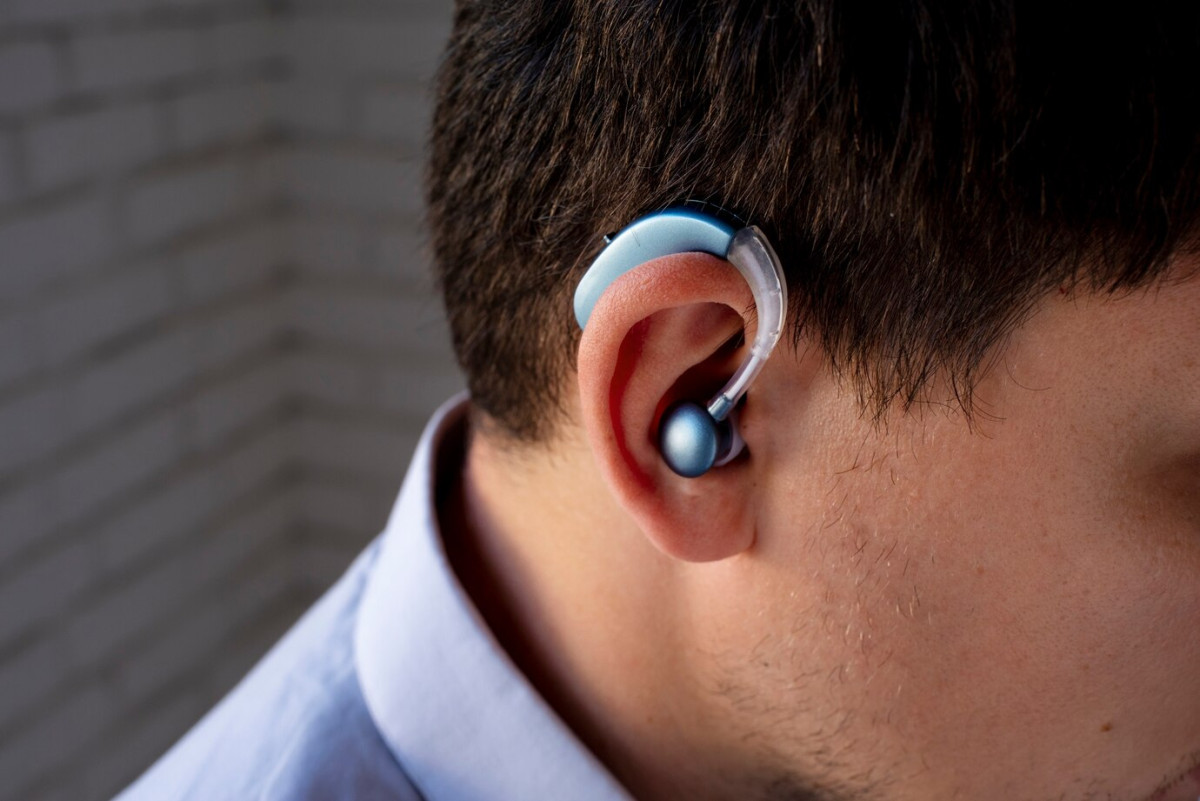Hearing aids have come a long way in the last decade, and 2025 is set to be a revolutionary year for those who rely on them. With technological advancements in artificial intelligence, connectivity, and sound processing, hearing aids are no longer just amplifiers; they are intelligent devices designed to improve quality of life. In this article, we’ll explore the latest features in hearing aids, how they are transforming the hearing experience, and what users can expect in the near future.
The Rise of AI-Powered Hearing Aids
Artificial intelligence (AI) has reshaped many industries, and hearing technology is no exception. In 2025, AI-driven hearing aids are more advanced than ever, allowing users to experience clearer, more natural sounds in any environment. Unlike traditional hearing aids that rely on basic amplification, AI-powered devices analyze sound in real-time and adjust accordingly.
One of the most significant improvements is adaptive noise reduction. Traditional hearing aids struggle in noisy environments, such as restaurants or crowded streets. AI now enables devices to distinguish between speech and background noise, suppressing unnecessary sounds while enhancing conversations. This results in a more comfortable and effortless listening experience.
Additionally, AI has introduced self-learning capabilities. Modern hearing aids can now adapt to a user's preferences over time. Instead of constantly adjusting volume or settings, the device learns from the user's behavior and fine-tunes itself automatically. This personalized approach eliminates frustration and ensures the best auditory experience for each individual.
Another game-changer is speech enhancement powered by AI. The newest models use deep learning algorithms to predict and clarify speech patterns, making it easier for users to understand conversations in complex listening environments. Whether at a party, in a lecture hall, or on a windy day, users can enjoy crystal-clear conversations without struggling to decipher muffled words.
Bluetooth Connectivity and Smartphone Integration
Connectivity is one of the biggest advancements in hearing aid technology in 2025. Hearing aids are no longer standalone devices; they are part of a larger ecosystem that integrates seamlessly with smartphones, smart TVs, and even virtual assistants like Alexa and Siri.
The introduction of direct Bluetooth streaming allows users to connect their hearing aids to their phones, computers, or TVs without the need for additional accessories. This means that phone calls, music, and podcasts can be streamed directly into the hearing aids, providing an immersive listening experience without background noise interference.
Smartphone apps have also become an essential tool for hearing aid users. In 2025, these apps offer more than just volume control—they now include real-time sound adjustments, allowing users to personalize their settings based on their location. Some apps even provide hearing health monitoring, tracking auditory changes over time and alerting users to potential issues before they become serious.
A new and exciting feature is multi-device connectivity, which allows users to switch between different devices seamlessly. For example, someone watching TV can instantly take a phone call without manually adjusting their hearing aids. This effortless transition between devices is a game-changer for people with busy lifestyles.
Rechargeable Batteries and Longer Battery Life
One of the most frustrating aspects of traditional hearing aids has been battery life. The days of frequently replacing tiny, disposable batteries are coming to an end. In 2025, rechargeable hearing aids have become the standard, offering improved battery efficiency and longer usage times.
Most modern devices now feature fast-charging technology, allowing users to get a full day's use with just a few hours of charging. Some advanced models even include wireless charging, eliminating the need for fiddly battery compartments altogether.
Additionally, hearing aid manufacturers have improved battery longevity, meaning that devices can hold a charge for multiple days before needing to be recharged. This is particularly beneficial for individuals who travel frequently or have limited access to power sources.
Improved Sound Processing and Directionality
Hearing aids in 2025 are designed to provide an even more natural listening experience. Thanks to advancements in sound processing and directionality, users can enjoy clearer and more precise audio in all environments.
Binaural sound processing is one such advancement that mimics the way natural hearing works. Traditional hearing aids amplify all sounds equally, making it difficult to focus on specific voices. Newer models, however, analyze incoming sounds and adjust the levels for each ear separately, creating a more balanced and immersive sound experience.
Another major improvement is directional microphones, which help users focus on sounds coming from specific directions. This is especially useful in noisy places where people need to concentrate on a conversation in front of them while minimizing distractions from behind or the sides. These directional microphones now work dynamically, automatically adjusting based on the user's surroundings.
Moreover, some of the latest hearing aids feature wind noise suppression, which is particularly beneficial for outdoor activities. Whether hiking, cycling, or simply walking on a breezy day, users can enjoy better clarity without disruptive wind interference.
Health and Wellness Monitoring
In 2025, hearing aids have evolved beyond just assisting with hearing—they now serve as comprehensive health and wellness devices. Many new models come with built-in sensors that monitor various health parameters, offering added benefits beyond hearing enhancement.
Some hearing aids now feature fall detection and emergency alerts. If a user experiences a fall, the device can automatically send an alert to a designated contact or emergency service, providing an added layer of security, especially for elderly individuals.
Another revolutionary development is heart rate and activity tracking. Some hearing aids can now monitor a user's heart rate and physical activity, helping them stay on top of their overall health. These features can provide early warnings about potential health issues, making hearing aids an integral part of preventive healthcare.
Additionally, cognitive health monitoring is gaining traction. Researchers have found strong links between hearing loss and cognitive decline. Advanced hearing aids can now track listening engagement and provide data to help users and healthcare providers detect early signs of cognitive decline, potentially leading to earlier interventions for conditions like dementia.
Conclusion
Hearing aids have undergone a significant transformation in recent years, and 2025 is proving to be a breakthrough year for users. With advancements in AI, connectivity, sound processing, and health monitoring, modern hearing aids offer more than just improved hearing—they provide an enhanced quality of life.
These innovations are making hearing aids smarter, more intuitive, and more user-friendly, ensuring that people with hearing loss can stay connected, engaged, and independent. Whether it’s AI-driven speech enhancement, seamless Bluetooth integration, or health tracking, the future of hearing aids looks brighter than ever.
FAQs
1. How do AI-powered hearing aids work?
AI-powered hearing aids use advanced algorithms to analyze and adapt to sound environments in real-time. They can distinguish between background noise and speech, automatically adjusting to provide clearer audio.
2. Are rechargeable hearing aids better than battery-operated ones?
Yes, rechargeable hearing aids are more convenient and eco-friendly. They offer longer battery life, fast-charging capabilities, and eliminate the hassle of constantly replacing disposable batteries.
3. Can I connect my hearing aids to my smartphone?
Yes, most modern hearing aids feature Bluetooth connectivity, allowing users to stream audio directly from their smartphones, adjust settings through an app, and even use voice assistants.
4. What is binaural sound processing, and how does it help?
Binaural sound processing mimics natural hearing by balancing sounds between both ears, providing a more natural and immersive auditory experience. This helps users focus on conversations and reduces listening fatigue.
5. Do hearing aids come with health tracking features?
Yes, many new models include health-tracking features such as heart rate monitoring, fall detection, and cognitive health tracking, making them valuable tools for overall well-being.




